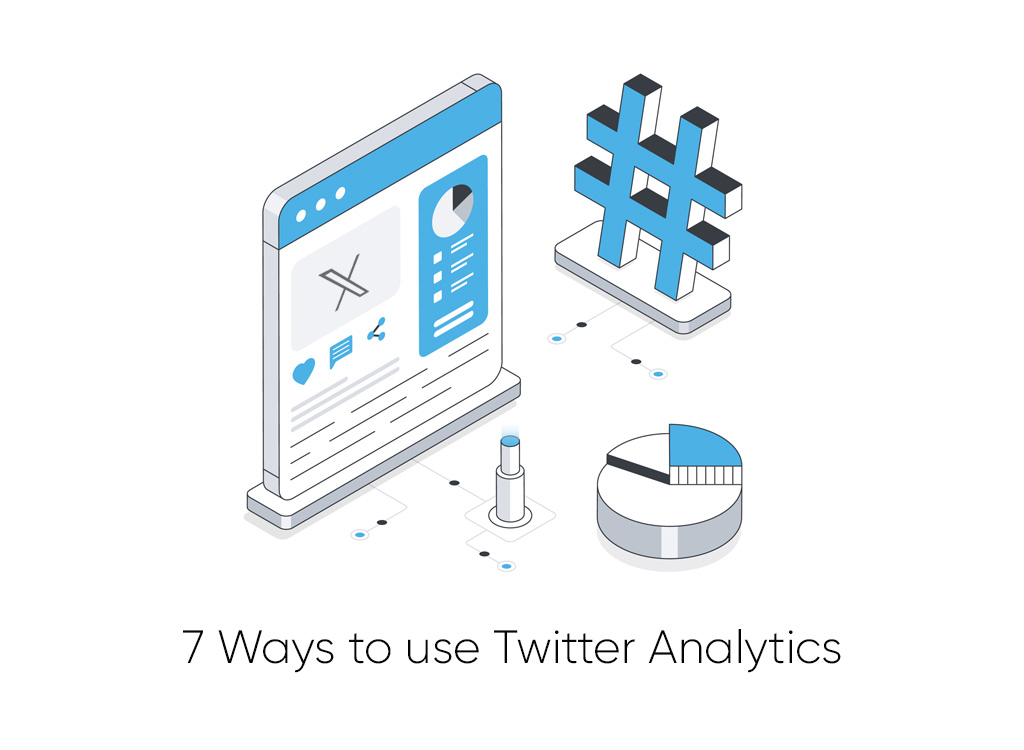7 Ways to Use Twitter Analytics

Tweets containing images earn 150% more retweets than plain text tweets. So, how can you tell if your tweets are performing well with your followers? That is where X Analytics (previously Twitter Analytics) comes in. As a marketer, content creator, or business owner, it is necessary to monitor your Twitter performance so as to create a good presence online.
Similar to Google Analytics, where you can get a better picture of the audience on your site, Twitter Analytics gives you useful data on how your content is doing on the platform.
What is Twitter Analytics?
Twitter Analytics is a free tool built into the platform that lets you monitor how your tweets and profile are performing. You can track data like:
- Likes
- Retweets
- Impressions
- Engagement rate
- Follower growth
- Link clicks
- And more
When you view your X Analytics, you will understand what your viewers are most interested in and can adjust your content to better align with their expectations.
Why Is Twitter Analytics Important?
Here’s why using Twitter data analytics matters:
1. Understand What Your Audience Likes
The monitoring of performance helps you determine which content is most appealing. Do you have a larger meme-fast tip/trendy content follower or informative threads person? Your analytics will dig you out.
2. See Your Growth Over Time
Twitter Analytics allows one to track their developments, how many new people follow their posts and how far their tweets are reaching, and any trends in their interactions over the months.
3. Post at the Right Time
With tools such as Twitter Media Studio, you may know when your audience is most active. It is one of the most numerous periods to publish and has obtained better viewership and response.
How to Check Twitter Analytics
It’s easy to access your analytics in a few clicks:
- Go to Twitter (desktop version)
- Click on More in the left sidebar
- Select Analytics
Once inside, you will end up in the dashboard that provides a comprehensive report on the profile and the tweet activity.
Key Metrics to Track in Twitter Analytics
Let’s go over the top 8 Twitter metrics you should be measuring and what each sign means:
1. 28-Day Summary
The top of the dashboard will show you a quick overview of the last 28 days, including:
- Total tweets
- Impressions
- Profile visits
- Mentions
- New followers
You will also notice a comparison with the prior 28 days. When the figures are increasing, then fantastic! Otherwise, it is an indicator to restructure your strategy.
2. Monthly Overview
Scroll down to get a monthly snapshot showing:
- Top tweet
- Top mention
- New follower
- Top media tweet
This assists you in identifying trends. Do your tweets have a better performance when they are funny, informational or image-based? Take note of what is working.
3. Impressions
Impressions show how many times your tweets were seen.
You’ll find this under the “Tweets” tab, with a breakdown for:
- Total impressions
- Average daily impressions
- Individual tweet impressions
4. Engagements
This counts how people interact with your tweet. This includes:
- Likes
- Retweets
- Replies
- Clicks
The more engagement your content has, the more it resonates.
5. Engagement Rate
Twitter automatically calculates this for each tweet:
Engagement rate = Engagements ÷ Impressions
This metric is a major deal, and it indicates the effectiveness of the tweet at hand, not merely the number of people who have witnessed it. When you have a high rate, then you are doing something good.
6. Engagement Types
To have a closer look at the forms of engagement, click on any of the tweets. These include:
- Detail expands – People interested in the full thread or responses
- Media engagements – Clicks on your photo, video, or GIF
- Profile clicks – Users checking out who you are
- Link clicks – Especially important if you’re sharing blog posts or promotions
- Follows – New followers gained from a specific tweet
Knowing what actions your tweets beg to be taken gives you the chance to make better content.
7. Average Tweet Performance
On the right-hand sidebar, you’ll see your:
- Average engagement rate
- Daily link clicks
- Daily retweets
- Likes and replies
8. Top Tweets
The best works of your selected period can also be discovered under the tab Top Tweets.
Look at:
- Engagement rate
- Impressions
- Total engagements
These best tweets can be turned into future guides. Whenever something was a hit, there was always a possibility of bringing back the old hit with a twist.
Final Thoughts
Taking time to learn to check Twitter Analytics results on a regular basis assists in making smarter content choices. It tells you what is working and what is not, and where you can make a better score.
Twitter analytics is the solution that you should use to support your strategy if you want to expand your audience, improve engagement, or direct traffic to your location online.
Boost your brand with data-driven strategies, partner with Run Marketing and watch your growth take off!
FAQs
How To Check Twitter Analytics For My Account?
You can check Twitter Analytics by clicking More on desktop and selecting Analytics to view your full Twitter data analytics dashboard.
What Is Twitter Analytics Used For?
Twitter Analytics or X Analytics is used to track tweet performance, engagement, and audience growth using key Twitter data analytics insights.
Which Twitter Metrics Should I Track?
Track key Twitter Analytics metrics like impressions, engagement rate, link clicks, and follower growth to improve your content strategy.
